Arturo de Navas(?) dancing with another man, Buenos Aires, 1903
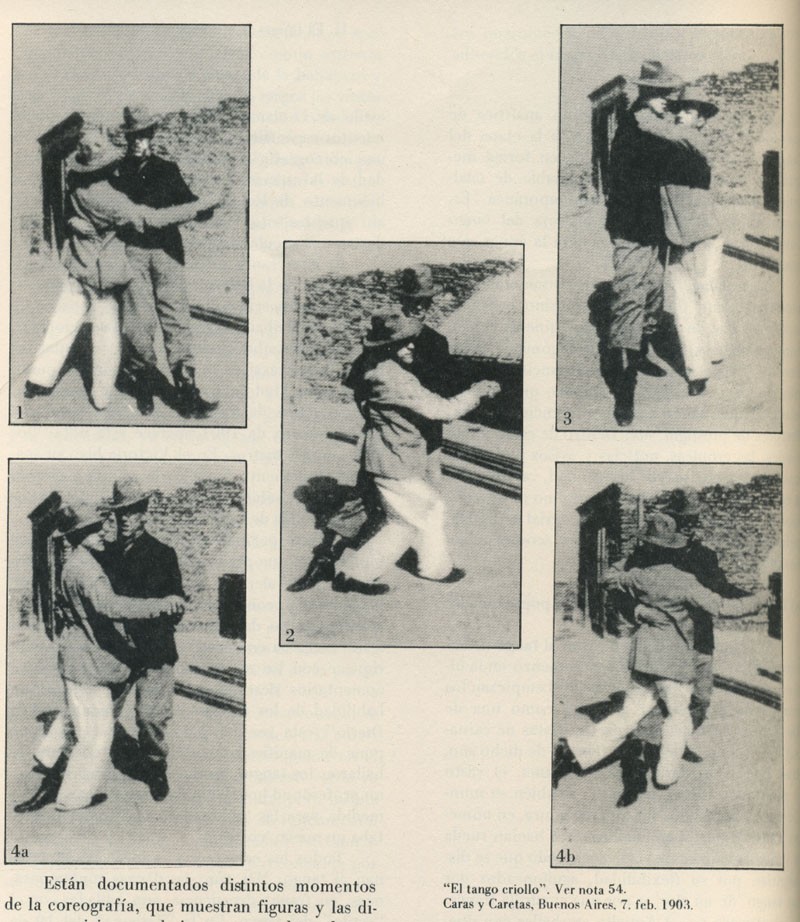
Ray Batchelor revised this on 23 November 2018:
This detail of the magazine page (the text is chopped off) was downloaded in 2016 from the website of Tangology 101, where this caption accompanies it:
“1903 – El Tango Criollo
In 1903, the Buenos Aires publication Caras y Caretas published the first known photos of someone dancing tango. The photos featured Arturo de Navas leading another man. Navas was a well-known dancer and friend of Carlos Gardel.”
These assertions should not be taken at face value. An authoritative account both of the images, their context in Buenos Aires in 1903 and what they do or do not show was drawn up in a blog by Wolfgang Freis:
In the article, Freis makes it plain that the photos were posed, that the dancer MAY have been Arturo de Navas, that this suggestion comes from the 1965 book, “Tango en la sociedad porteña 1880-1920” by Hugo Lamas and Enrique Binda, and that a parallel set of images with the dancer leading a woman were taken at the same time, in the identical poses and published later in the same magazine.
On 21 November 2018, I visited the Archivo General de la Nación in Buenos Aires where photographs of the five photos reproduced in the article are held. The collection is digitised and freely available to the public. The digital images invariably show both the front AND back of each photo, which I reproduce, with acknowledgement, below:
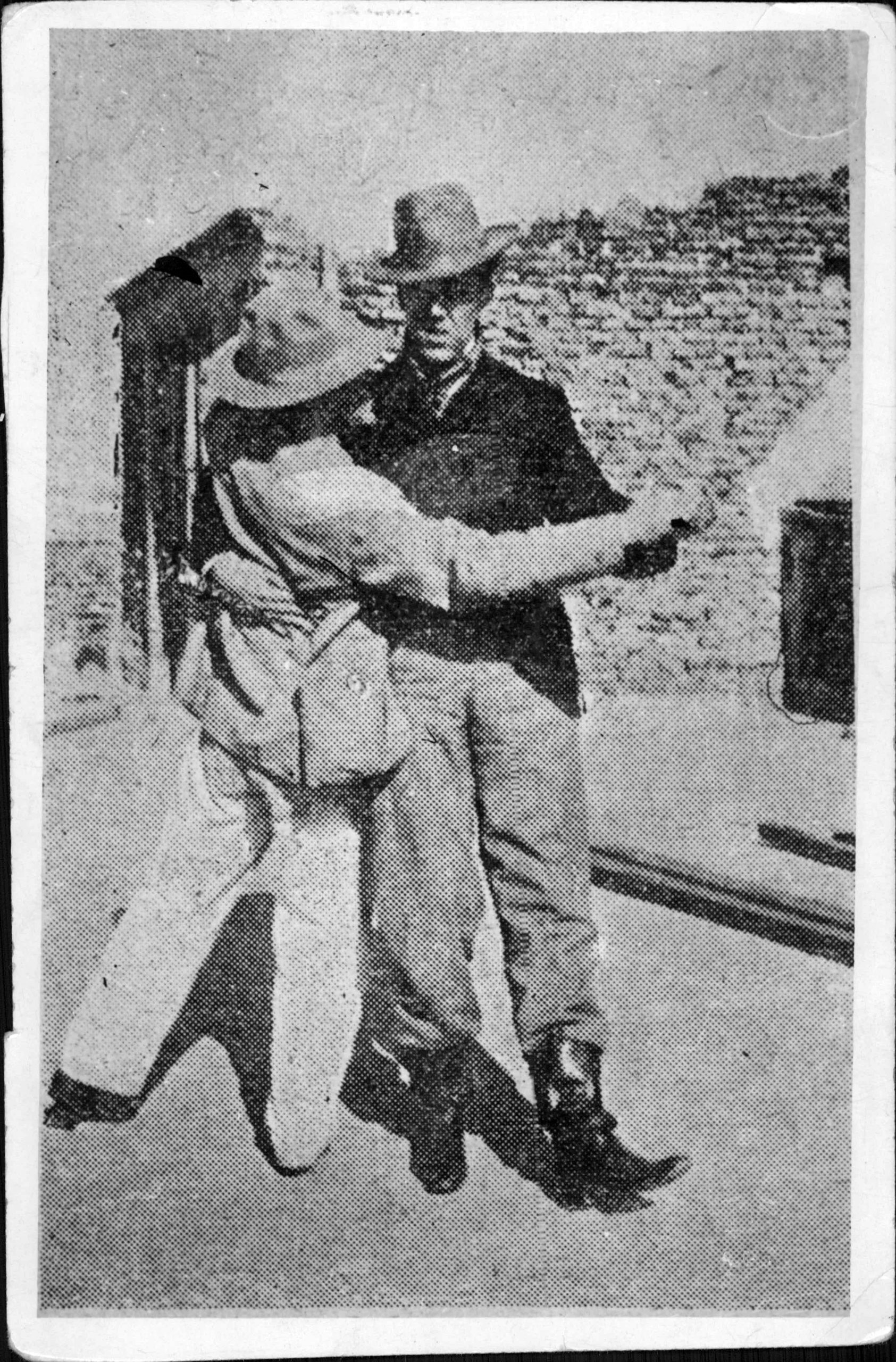
Argentina, Archivo General de la Nación, Departamento Documentos Fotográficos o AR_AGN_DDF/Consulta_INV: 295455_A
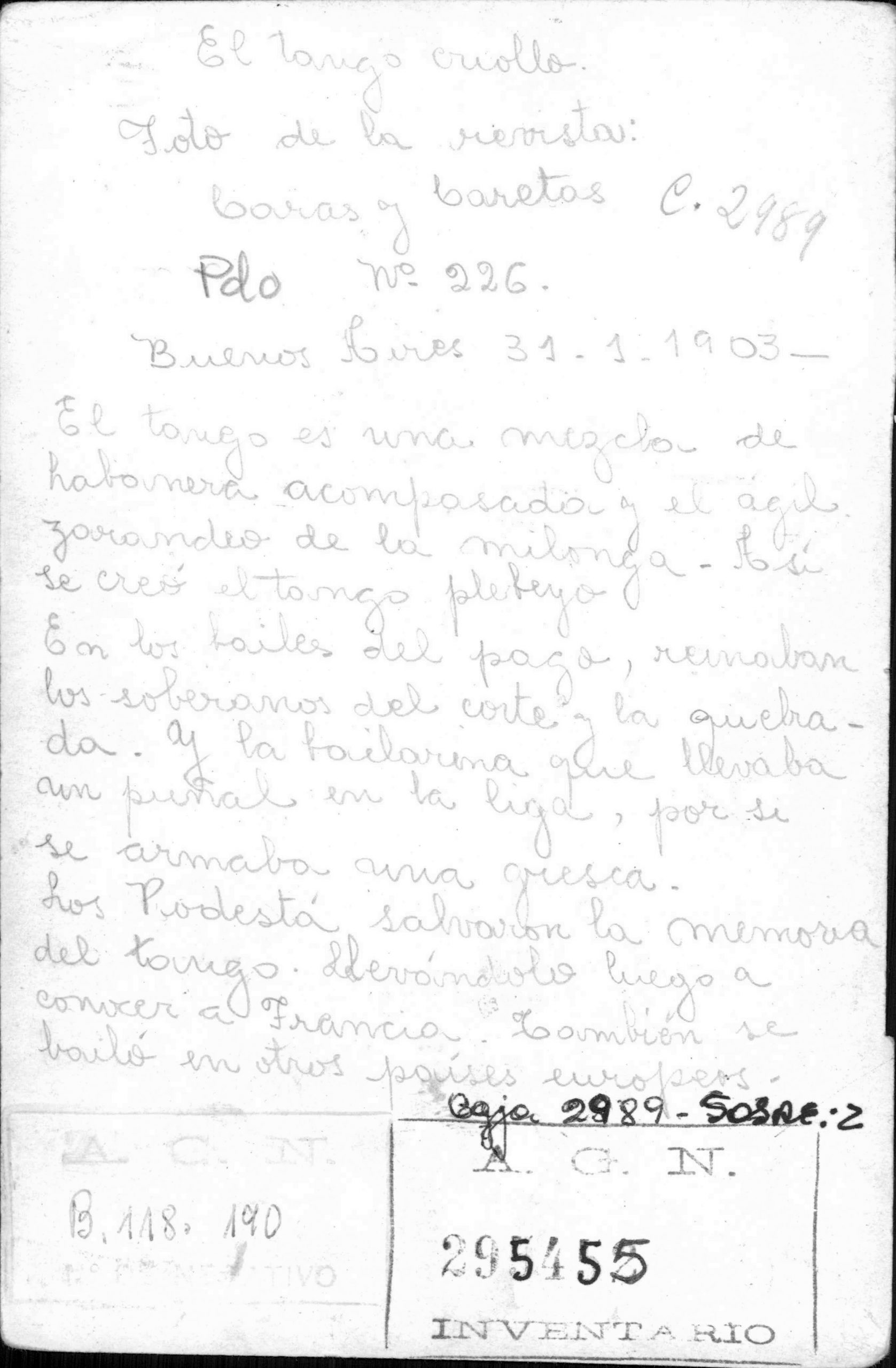
Argentina, Archivo General de la Nación, Departamento Documentos Fotográficos o AR_AGN_DDF/Consulta_INV: 295455_R
Following a Facebook posting on The Queer Tango Conversation, Moisés Real the queer tango singer based in Buenos Aires, gave the Spanish as:
El tango es una mezcla de habanerra acompasada y el ágil zarandeo de la milonga. Así se creo el tango plebeyo. En los bailes del pago, reinaban los soberanos del corte y la quebrada. Y la bailarina que llevaba un puñal en la liga, por si se armaba una gresca. Los Podestá, salvaron la memoria del tango. Llevándolo luego a conocer a Francia. También se bailo en otros países europeos.
… which Jose Otero translated as:
The tango is a mix of the ‘habanera acompasada’ and the quick back and forth of the milonga. That’s how the street tango was created. In the ‘bailes de pago,’ the chiefs of the cut and break ruled. And the woman dancer that carried a blade in her garter in case a brawl started. The Podestás saved the memory of the tango. Later taking it to meet France. It was also danced in other European countries.
As I commented then: ‘The original article which accompanied this series of 5 photos of men dancing together in Caras & Caretas in 1903, the first ever photographic representation of tango of any kind, (in Spanish, originally) said this:
‘”These [dancers] are not those picturesque figures of the classic hall of the regional dance, where reigned supreme the corte and quebrada and the charming com[p]adrita of the dagger in the garter—which participated just as easily in a row as in a lovers’ quarrel or in a conspiracy.
‘”The memory of tango has been saved due to the Podestá’s, who preserve it. But the figure of the quarrelsome compadre who used to dance it has been lost forever. His fading shadow is barely evoked by the few survivors of some bloody drama of that time.”
‘…the Podestas being brothers who were theatrical producers. Whoever wrote on the back of the photo may have been paraphrasing or [mis-]remembering the original article which is a very odd piece of writing indeed.
‘Of course, in 1903, the tango had yet to reach Paris [1904 or 1907, depending on who you believe].’
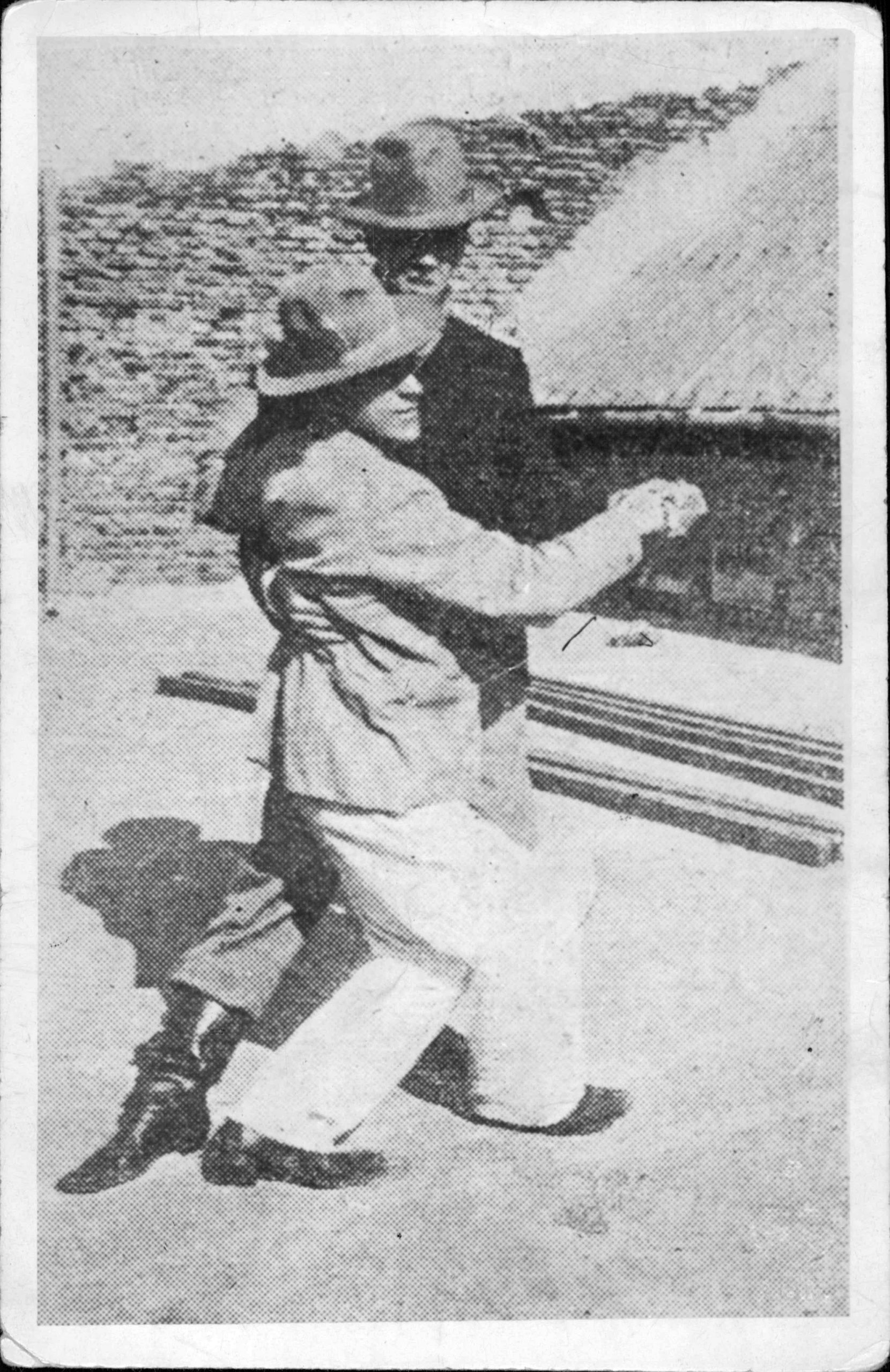
Argentina, Archivo General de la Nación, Departamento Documentos Fotográficos o AR_AGN_DDF/Consulta_INV: 295456_A

Argentina, Archivo General de la Nación, Departamento Documentos Fotográficos o AR_AGN_DDF/Consulta_INV: 295456_R
Which according to Montserrat Roser says “The creole tango. Photo taken from the magazine Baras y baritas [Caras y Caritas] showing a step or “cut” called the scissors. A male couple dancing the tango. [January 31st 1903]”
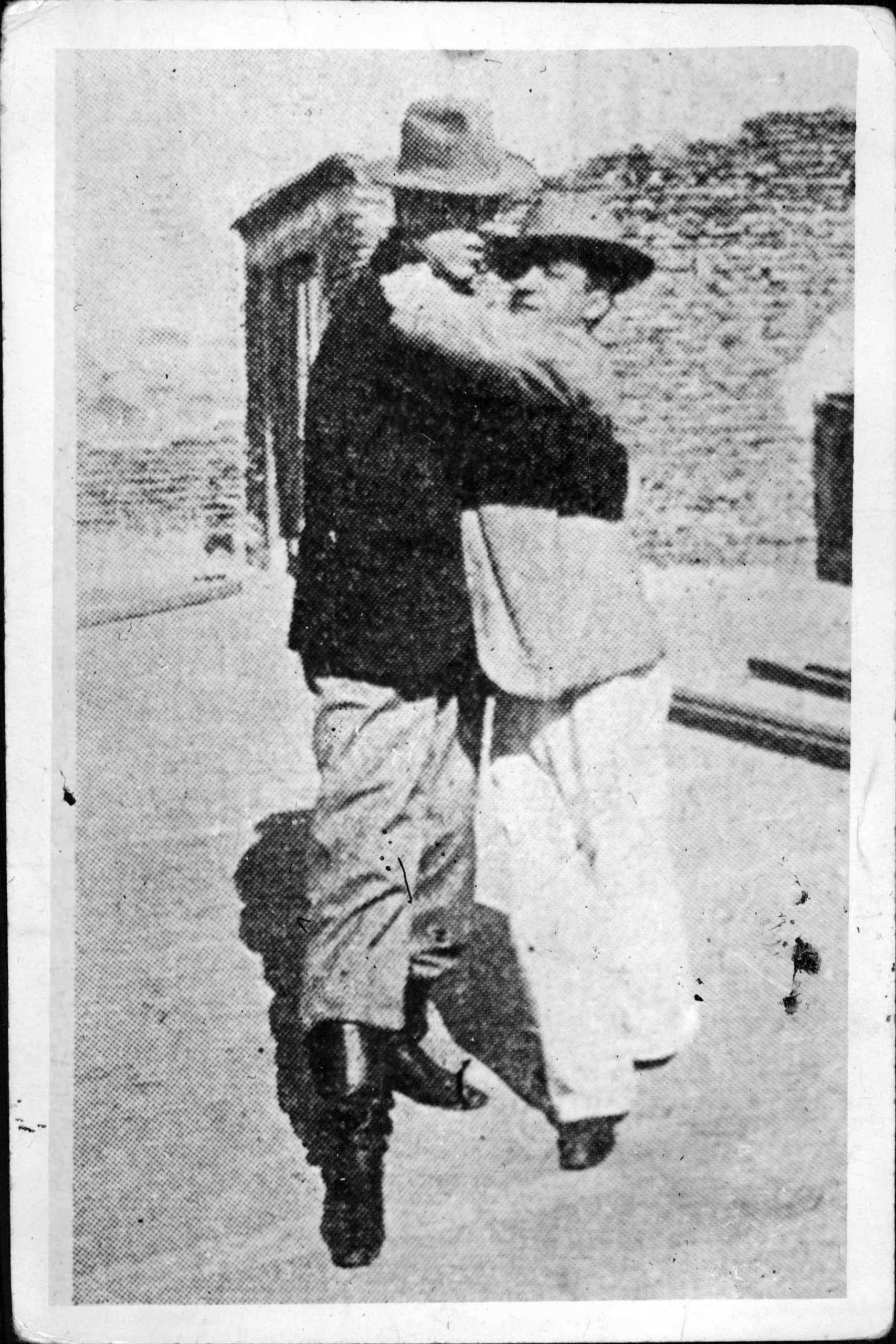
Argentina, Archivo General de la Nación, Departamento Documentos Fotográficos o AR_AGN_DDF/Consulta_INV: 295457_A
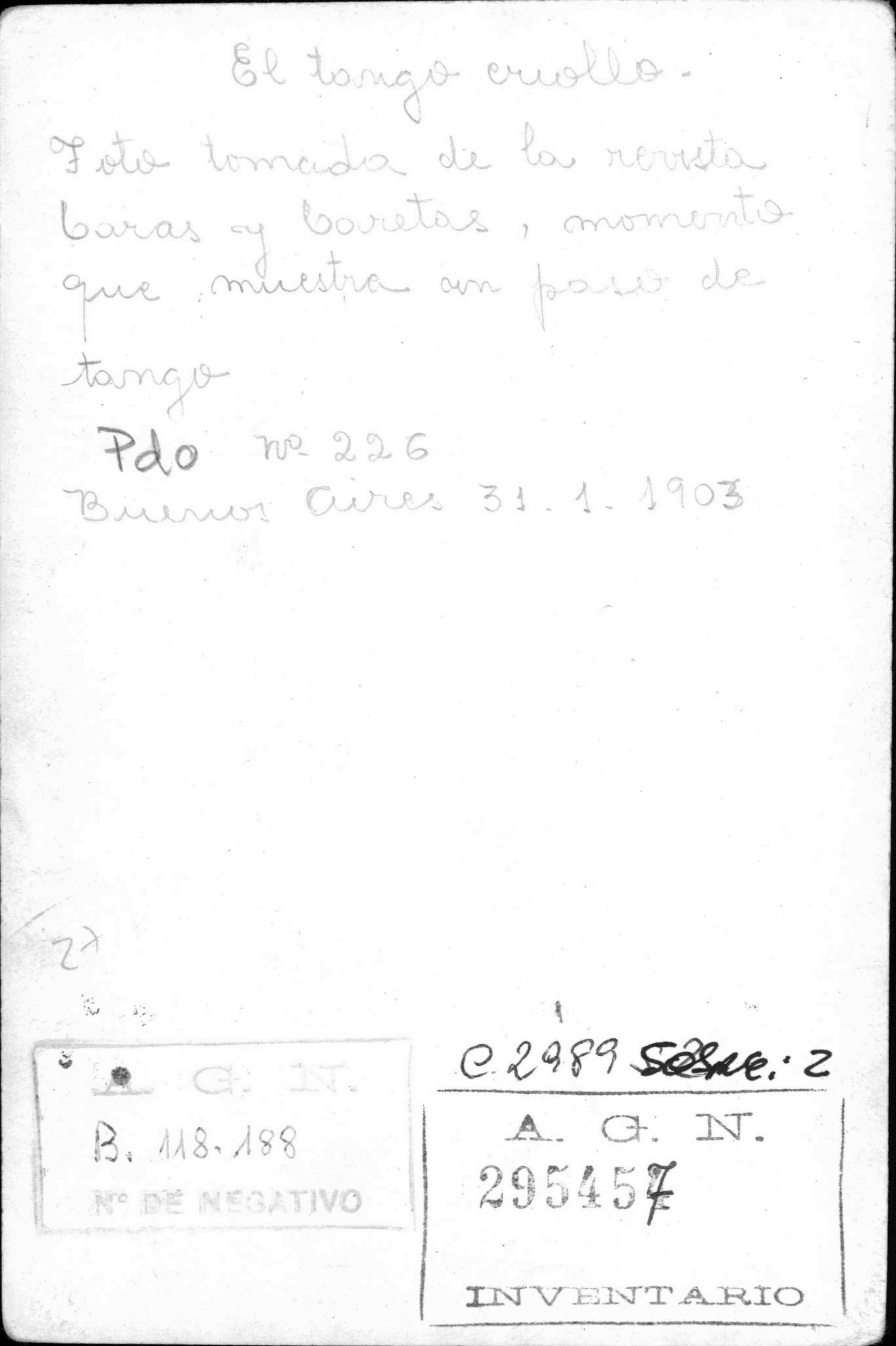
Argentina, Archivo General de la Nación, Departamento Documentos Fotográficos o AR_AGN_DDF/Consulta_INV: 295457_R

Argentina, Archivo General de la Nación, Departamento Documentos Fotográficos o AR_AGN_DDF/Consulta_INV: 295458_A
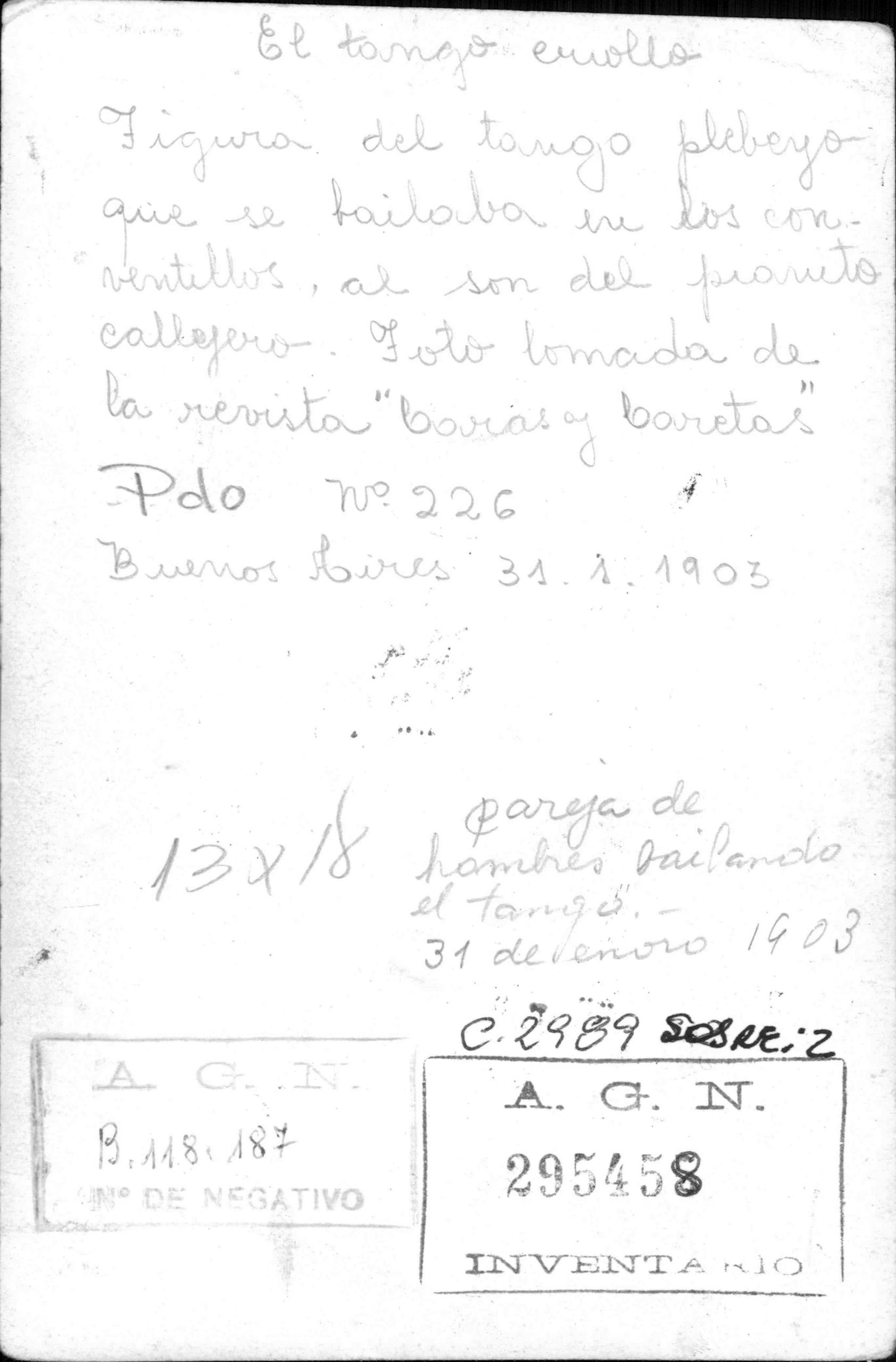
Argentina, Archivo General de la Nación, Departamento Documentos Fotográficos o AR_AGN_DDF/Consulta_INV: 295458_R
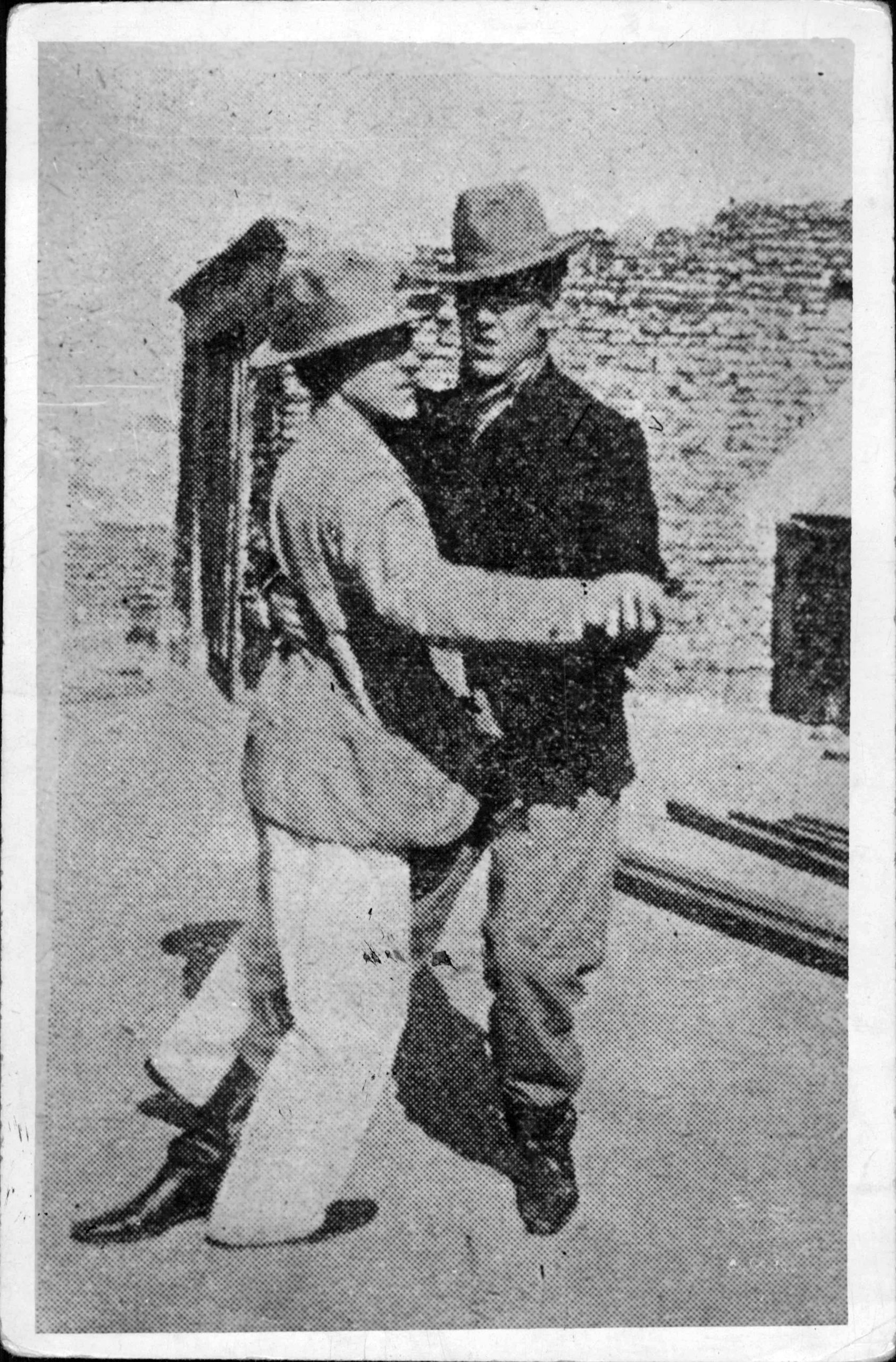
Argentina, Archivo General de la Nación, Departamento Documentos Fotográficos o AR_AGN_DDF/Consulta_INV: 295459_A
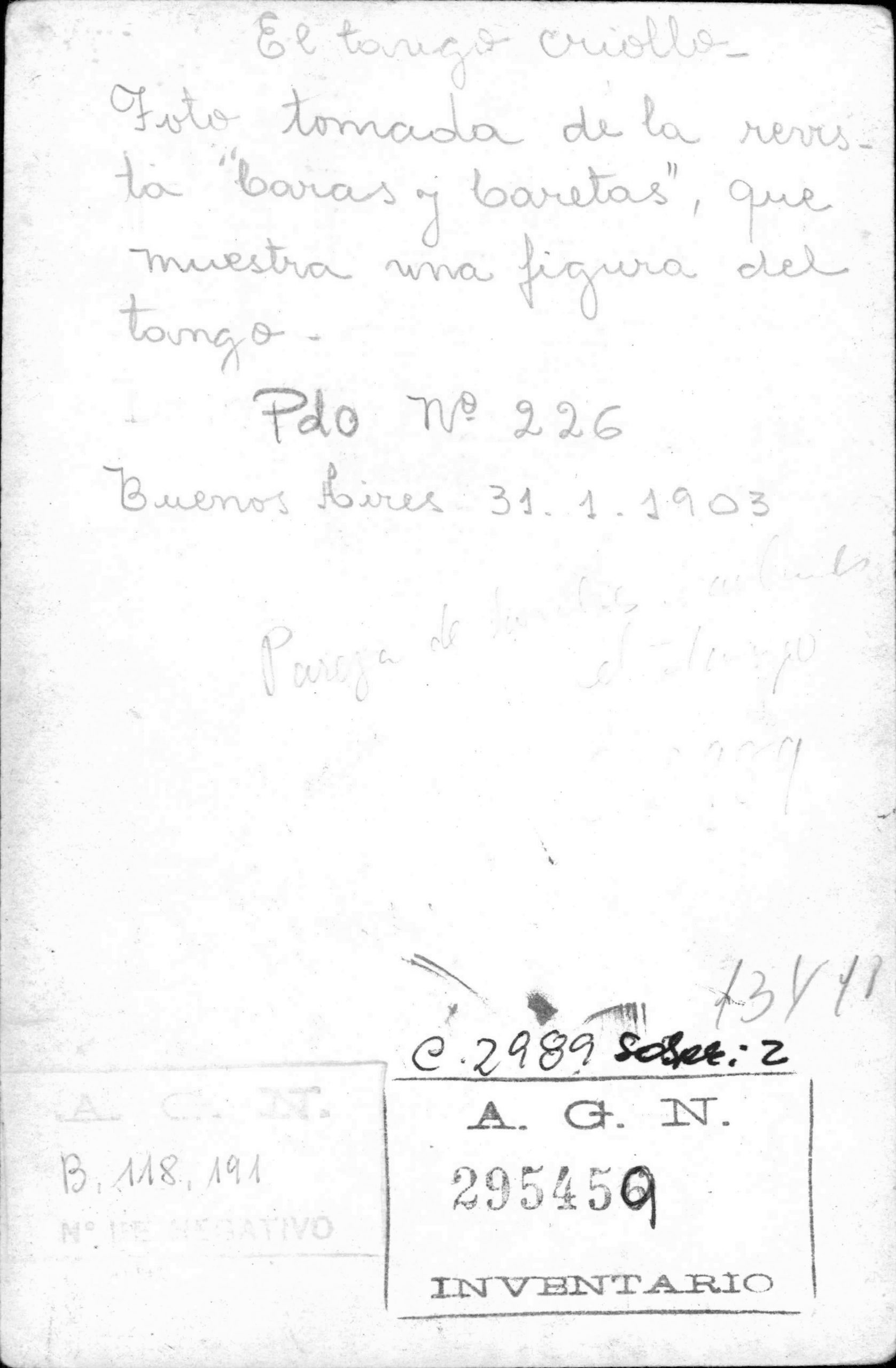
Argentina, Archivo General de la Nación, Departamento Documentos Fotográficos o AR_AGN_DDF/Consulta_INV: 295459_R
What do you believe the copyright status of theses images to be?
Ray Batchelor believes: “The image paper detail is out of copyright. All other images are credited to the Archivo General de la Nación, above, as shown. I hold an “ARCHIVO GENERAL DE LA NACIÓN DEPARTAMENTO DOCUMENTOS FOTOGRÁFICOS, CERTIFICADO DE PROCEDENCIA”
The image url of the paper detail:
http://www.tangology101.com/main.cfm/title/Tango-History-in-Pictures/id/1165